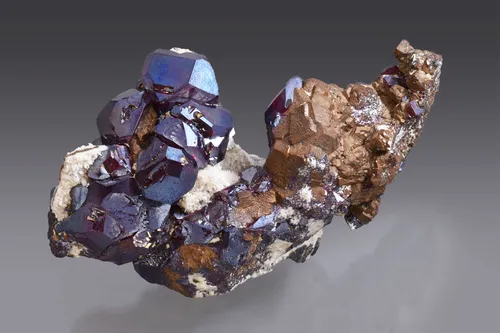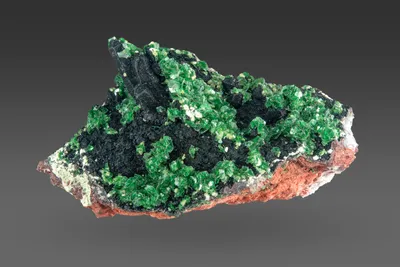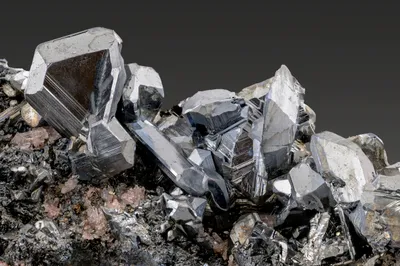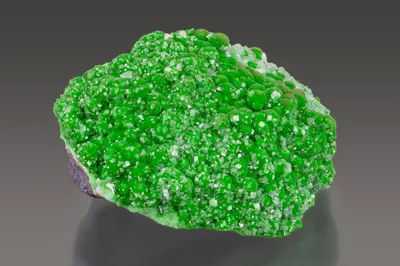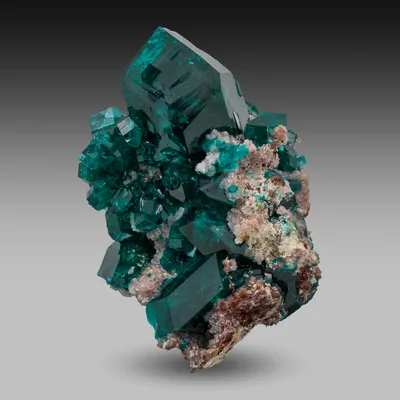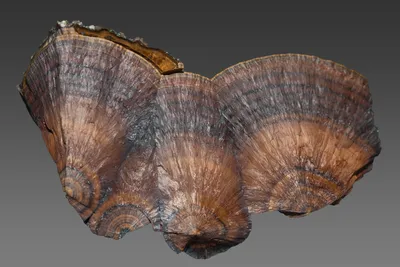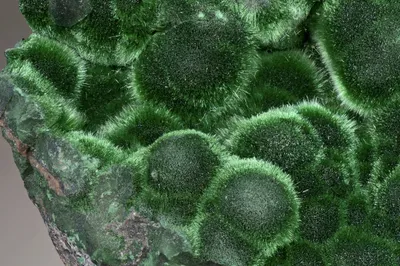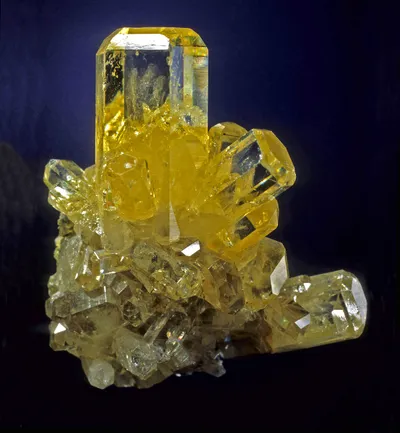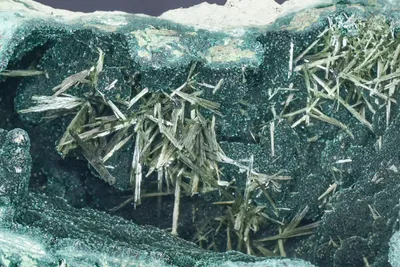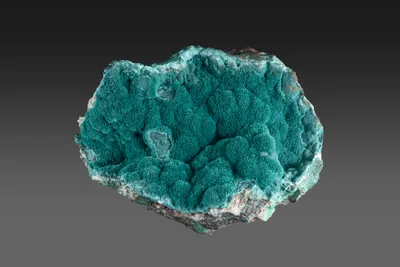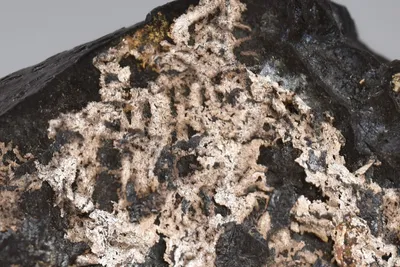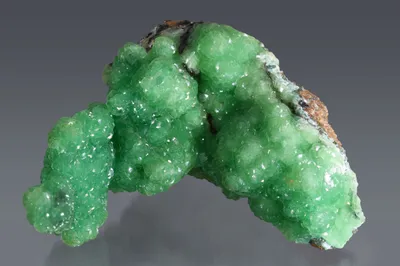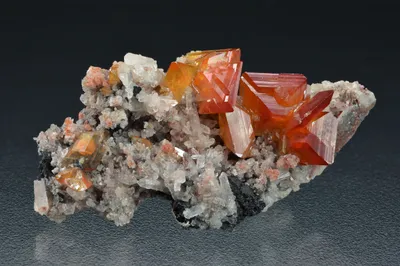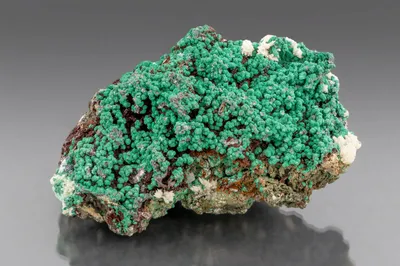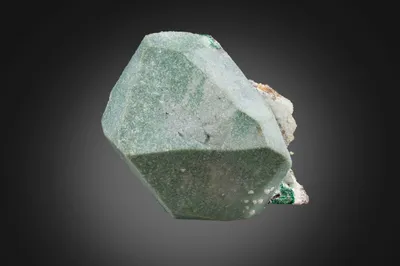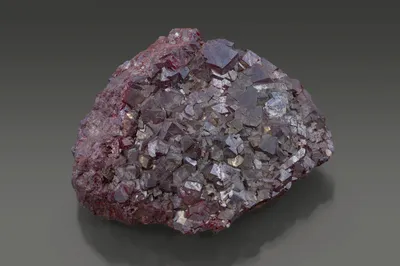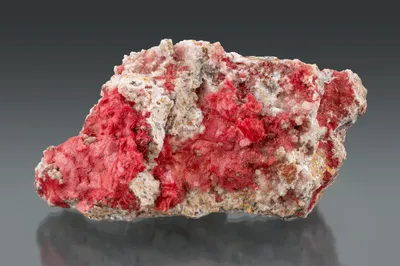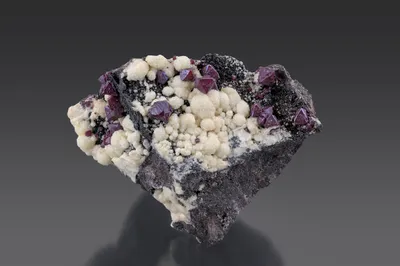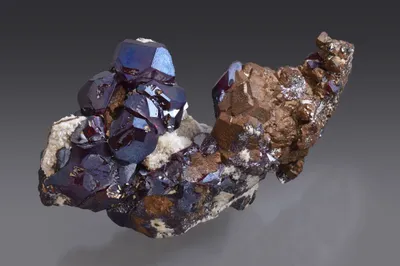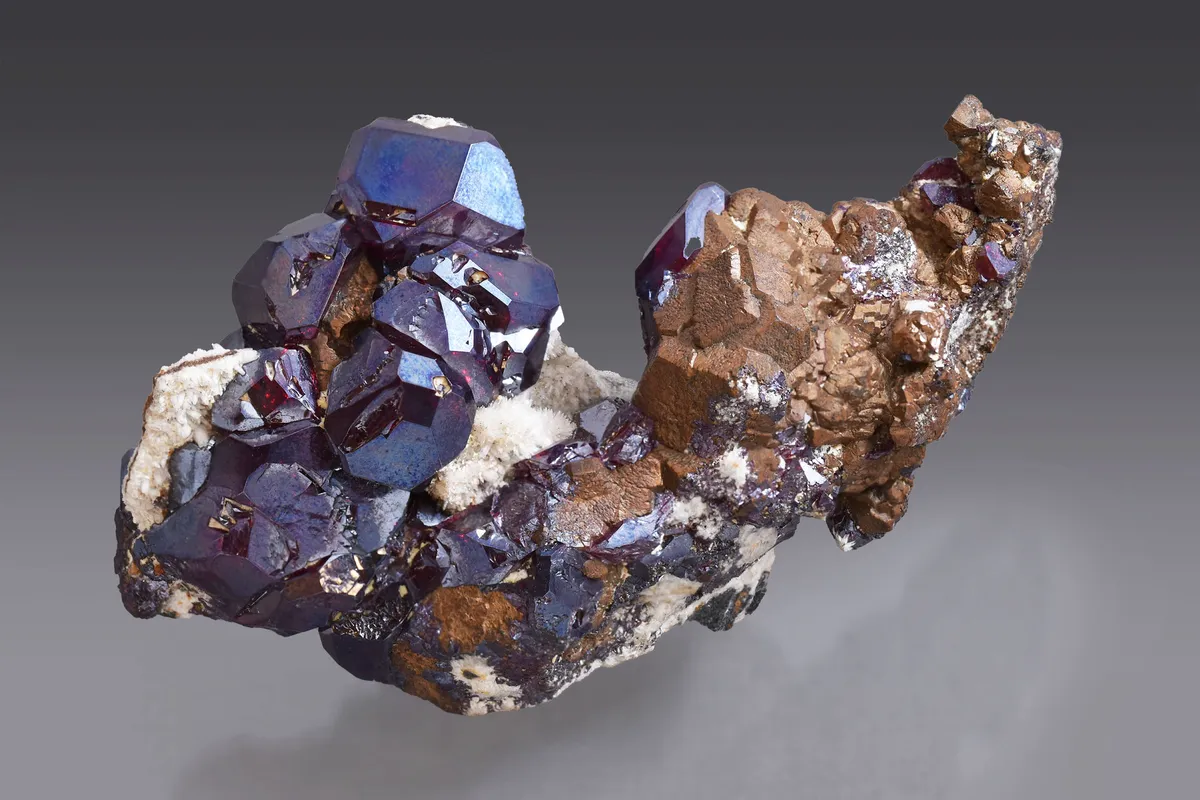
Image Credit: Malcolm Southwood
Mineral Species
Cuprite
Type Locality
No
Composition
Cu2O
Crystal System
Cubic
Status at Tsumeb
Confirmed
Abundance
Common
Distribution
First, second and third oxidation zones
Paragenesis
Supergene
Entry Number
Species; TSNB100
General Notes
According to Gebhard (1999), cuprite was found at Tsumeb "…in nearly all parts of the deposit". Massive cuprite, often in association with chalcocite or with native copper was sufficiently abundant locally to be of commercial significance (Lombaard et al. 1986).
Klein (1938) described massive cuprite ore from 3 Level in the upper part of the first oxidation zone and noted the occurrence of cuprite with aragonite from between 7 and 11 levels.
Spectacular examples of cuprite (v. chalcotrichite) were found on 12 Level, towards the base of the first oxidation zone; a very fine example is in the Klein Collection (Klein # 807) at Harvard University (MGMH 126820). Von Bezing et al. (2014) also noted the occurrence of chalcotrichite with copper and calcite in the second oxidation zone.
In the third oxidation zone cuprite crystals (to 50 mm) were found on 44 Level (Gebhard 1999).
Crystallised cuprite occurs most commonly as octahedral modifications on cubic and dodecahedral crystals; simple (unmodified) cubes and octahedra are rare (Von Bezing et al. 2014). Crystals to 5 mm are abundant, while very large crystals (to 30 mm) are rare (Gebhard, 1999). Bartelke (1976) described the colour ranging from ruby-red to black-red and noted the brilliant "diamond-like" lustre.
Pinch and Wilson (1977) noted that Tsumeb cuprite "… forms beautiful cochineal-red crystals to about 3 cm." and that "Crystal forms include the octahedron, cube, dodecahedron, or combinations thereof."
Skeletal growth and cavernous crystals are quite commonly observed. Wilson (1978) described specimens from 35 Level comprising dark 10-15mm "… dodecahedrons with minute octahedron faces sometimes visible and carrying a light dusting of malachite on some but not all crystals. Many of the crystals are cavernous in part."
Fine examples of acicular cuprite (v. chalcotrichite) occur in association with calcite and dolomite. Inclusions of chalcotrichite in calcite and in cerussite are the cause of intense orange and / or red colouration in those minerals.
Associated Minerals
aragonite; austinite; azurite; baryte; bayldonite; berzelianite (?); calcite; cerussite; chalcocite; clinoclase; conichalcite; copper; dioptase; dolomite; duftite; eugenite; ferrilotharmeyerite; gaitite; goethite; hedyphane; keyite; koritnigite; malachite; mimetite; olivenite; prosperite; quartz; rosasite; silver; smithsonite; witherite; wulfenite
Pseudomorphs
Cuprite is reported to form pseudomorphs after the following minerals: copper (common).
The following minerals are reported to form pseudomorphs after cuprite: conichalcite (rare); malachite (common, though often partial); plancheite (rare).
